We may be dirty monkeys at heart, but humans have done some pretty astonishing things in outer space over the past 50 years. We’ve launched dozens of interplanetary spacecraft, and explored most of the solar system with space robots who sent back pictures and scientific data. Here are our favourite of those craft, ranked for your pleasure.
Interplanetary means these craft have to travel between planets, so I don’t want to hear any whining about how there are no lunar landers or Apollo spacecraft here. Our Moon is NOT A PLANET.
1. Martian Rovers
Curiosity, Opportunity and Spirit are, hands down, the greatest space explorers of our time. They may have spent most of their lives on Mars, but these intrepid rovers are definitely the very best interplanetary craft, based on sheer grit, ability to survive, and the wealth of data they have sent home. Plus, they journeyed through interplanetary space to get to Mars, and Curiosity riveted the world with her insane parachute/sky crane landing on the planet’s surface.
Interpolated video of the Curiosity landing, by Bard Canning
Nearly every picture you’ve ever seen from the Martian surface was taken by one of these intrepid bots. Curiosity is our current favourite, because she has a laser (FYI, rovers are female — just like ships) and is specifically tasked with finding signs of life on Mars along with all her other duties. I actually still get teary-eyed when I watch videos of her landing.
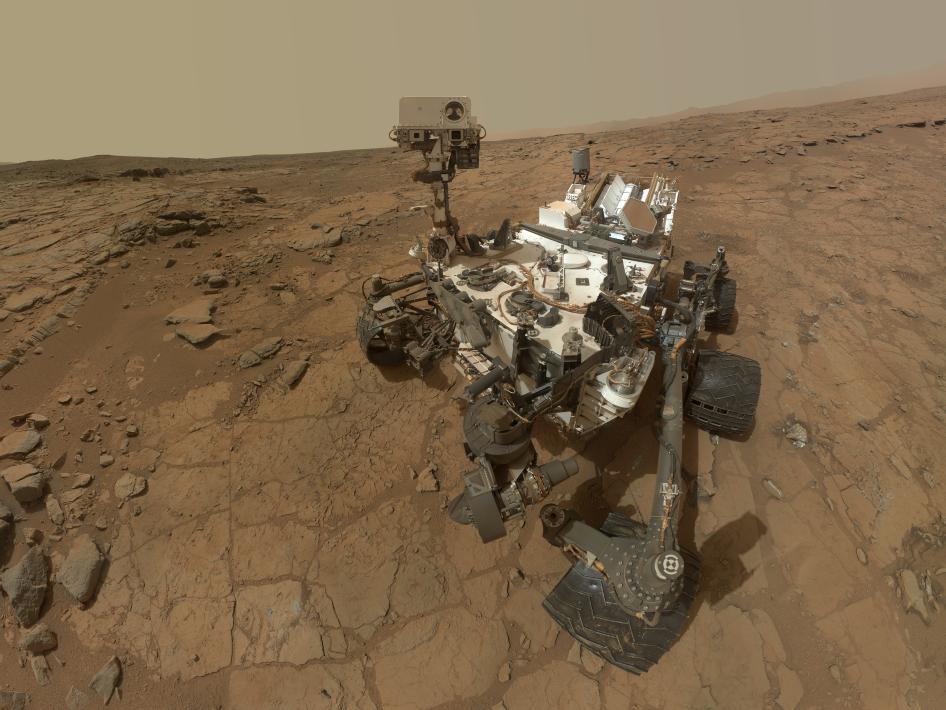
Above is a self-portrait that Curiosity took on Mars. Image via NASA.
But let us also sing the praises of Opportunity, who landed on Mars 11 years ago and is still going strong, through many hazards and remote software updates. She’s outlasted her mission timeline by over 10 years (she was only supposed to last 90 sols, or Martian days).

Here’s a picture that Opportunity took in March 2015, of the Spirit of St. Louis crater. Image via NASA.
And of course we still mourn Spirit, who finally stopped being able to transmit in 2010 (she had stopped rolling about 1 year before that, after getting stuck). Still, she outlasted her mission lifespan by 5 years.
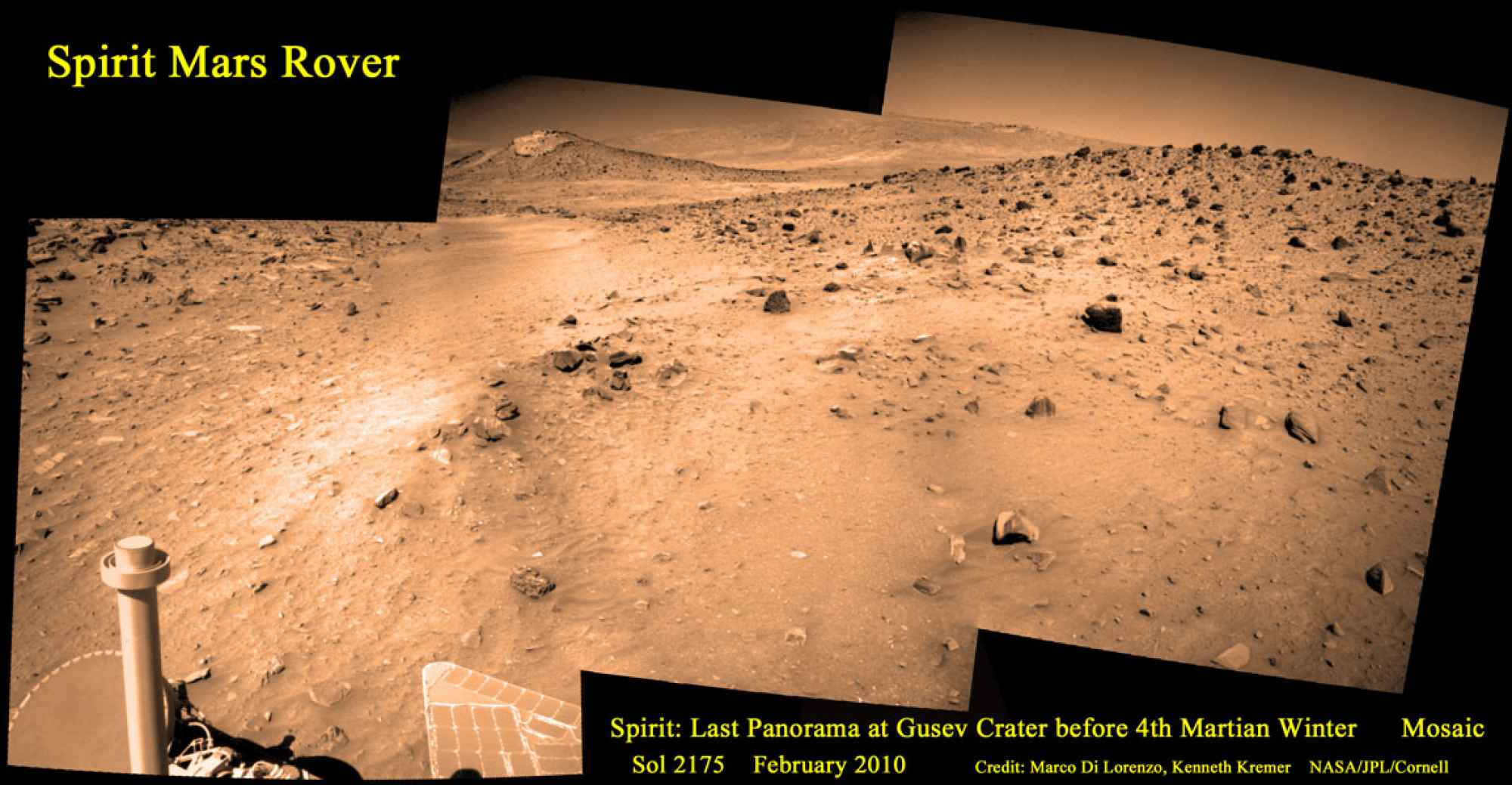
Here is the last picture that Spirit sent home.
Special props to Sojourner, the first Martian rover, who lasted for about 3 months on Mars in 1997.
You can learn more about the Mars Rovers’ ongoing adventures via NASA.
2. Voyager 1 and 2 [UPDATED]
The Voyager 1 spacecraft was launched by NASA in 1977, with a mission to fly past Jupiter and Saturn, and then angle off the plane of the solar system, heading beyond the safe envelope of our sun’s protective magnetic heliopause, and into deep space.
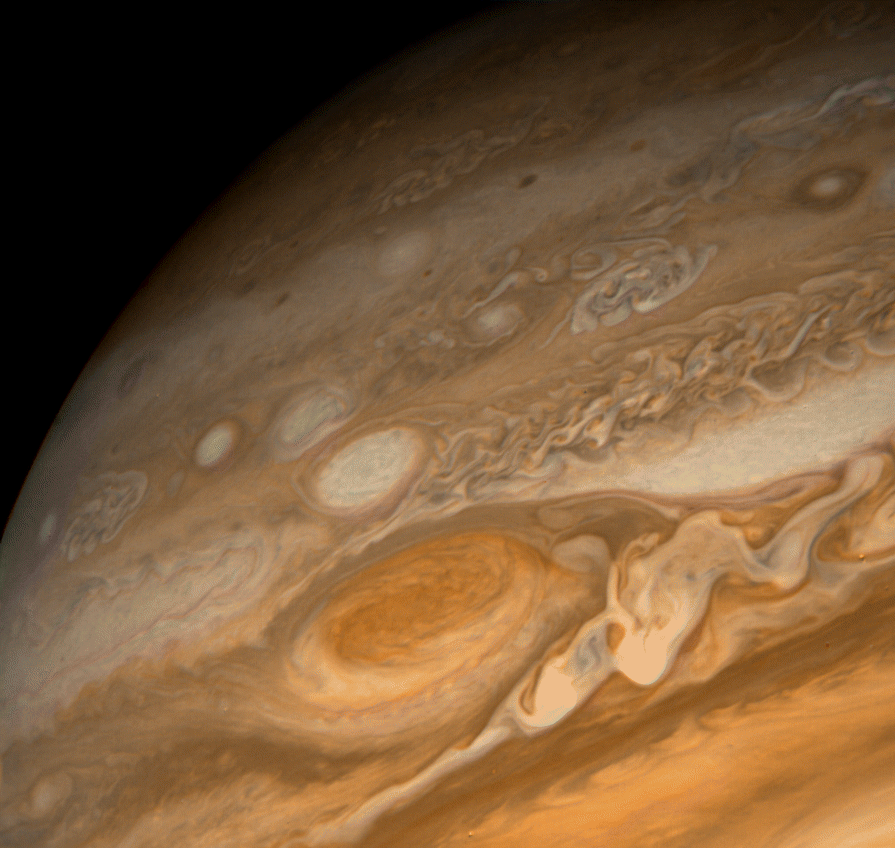
We got our first closeup pictures of Jupiter from Voyager 1, and they were incredible. Look at the great red spot, there.
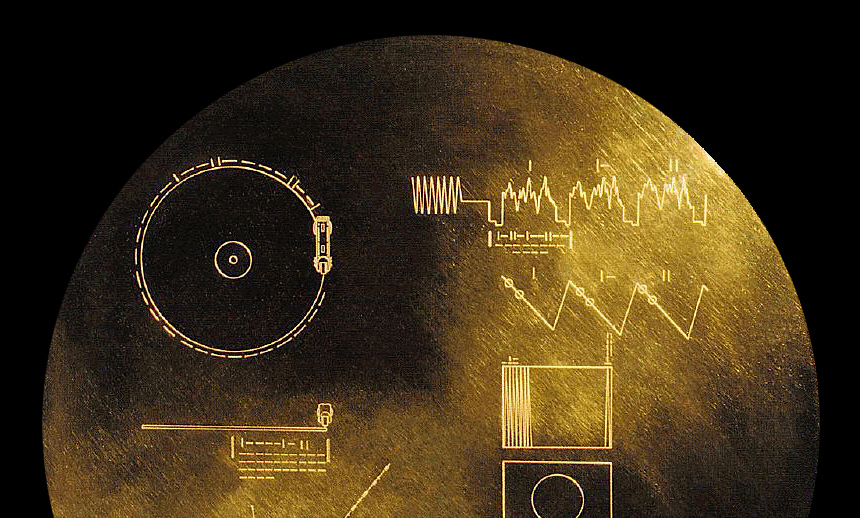
Because scientists hoped Voyager would make it beyond our solar system, and perhaps into the orbit of another civilisation, they equipped it with the famous “golden record,” which contains information about Earth and humanity (including a map to get here, which many people thought might be a bad idea).

Image via Nature
In 2013, Voyager finally made it to the edge of the heliopause, and is taking baby steps on humanity’s first interstellar adventure. If that isn’t badass, I seriously don’t know what is.
UPDATE: Due to popular (and rightful) demand, I have added Voyager 2 to the ranker in the same position as its sister probe. Like Voyager 1, Voyager 2 also carries a golden record and has a mission to explore the outer solar system before heading for interstellar space — which it’s likely to reach in 2016. It is still transmitting data, making it the longest-running spacecraft in the system.
Like Voyager 1, Voyager 2 gave us breathtaking images of the outer planets, including this incredible view of the clouds of Neptune.

Neptune’s clouds, image via NASA
3. Cassini-Huygens
This spacecraft was actually on two missions — NASA’s Cassini craft, launched in 1997, was designed to zoom around Saturn taking pictures of the planet, its rings and moons. And ESA’s Huygens probe had just one mission: to study and then plunge into the unknown landscape of Saturn’s moon Titan, which is shrouded in a thick, cloudy atmosphere full of hydrocarbon rains.
Both missions were a huge success. Huygens gave us incredibly detailed information about Titan, revealing an ultra-cold but rich landscape full of liquid methane and solid rocks made of water.
Later imagery from Cassini revealed that the moon is covered in lakes and beautiful dunes, and has seasonal rains.
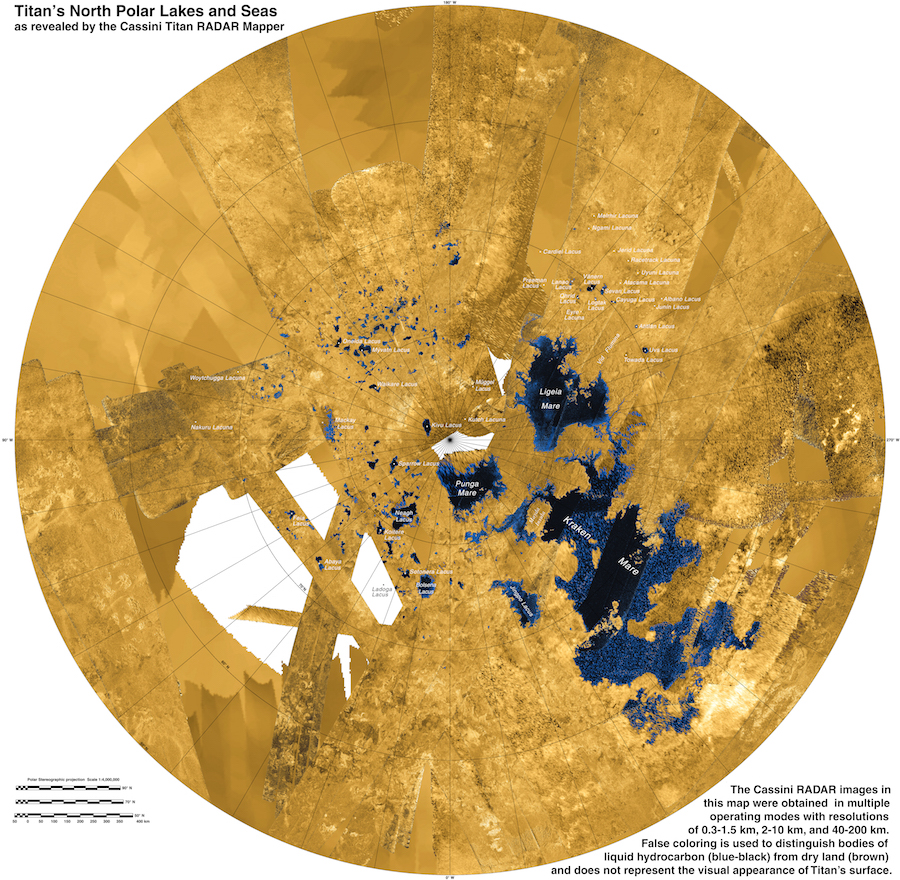
Cassini, still going strong, has been sending back images and readings from Saturn and its moons since 2004.
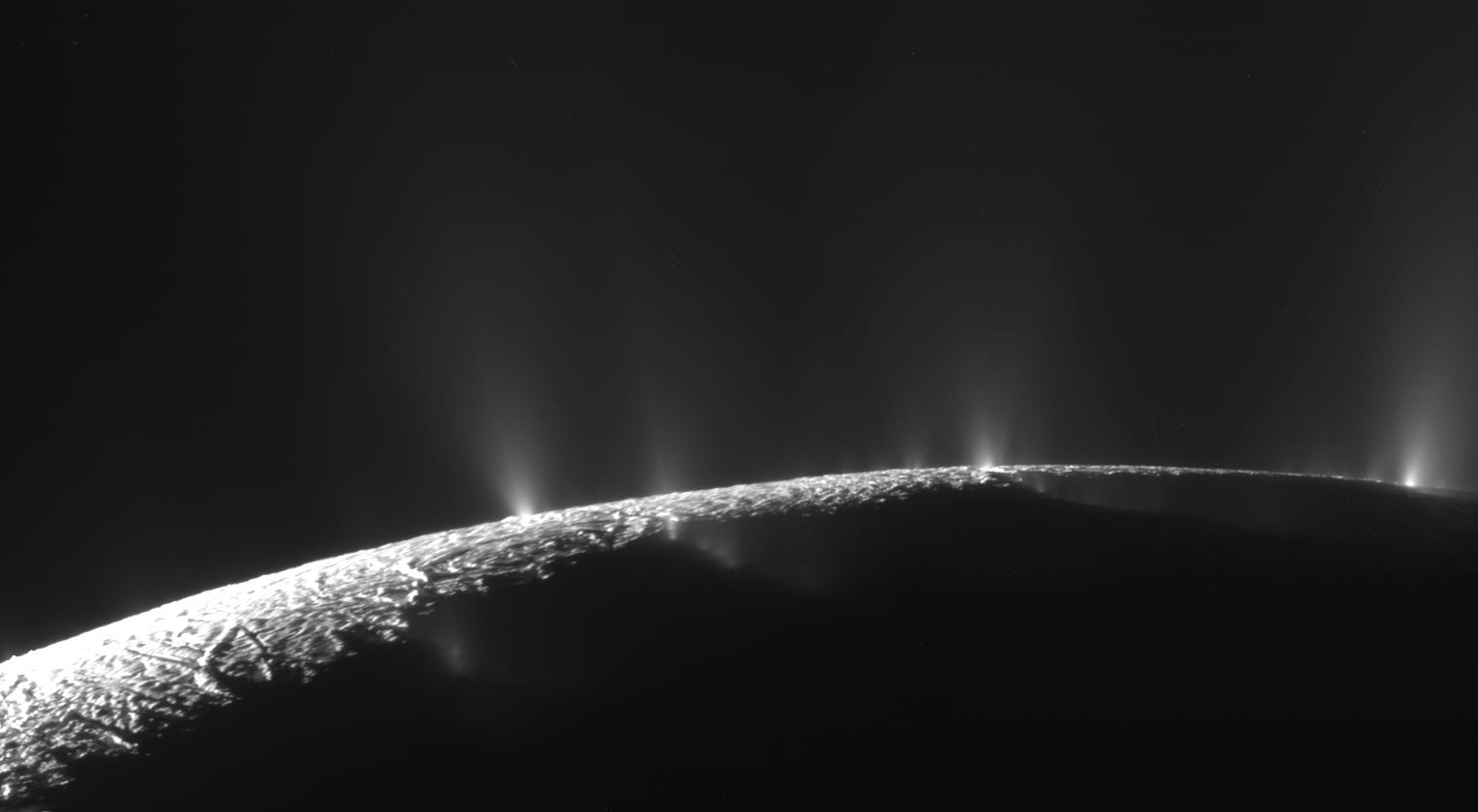
It’s still out there, exploring the ringed planet, and teaching us about watery moon Enceladus (you can see the water plumes on Enceladus above, image via NASA), Saturn’s rings and more.
Just look at this amazing image of Saturn that this wonderful spacecraft took, below.

Doesn’t it make you just a little awestruck to be living in this time of interplanetary exploration?
4. Viking 1 and 2
NASA’s Viking landers, Viking 1 and Viking 2, were the first spacecraft to land successfully on Mars. Launched in 1975, they were state-of-the-art technology and sent humanity the very first pictures of the Martian landscape from close-up.

Here’s our friend Carl Sagan, with a model of a Viking lander, image via JPL.
They proved that humans had the technical ability to reach Mars and land on it — and were the first human creations to set foot on another planet for any length of time (the ill-fated Soviet Mars 3 landed on the Martian surface in 1971, but stopped transmitting data after several seconds). Viking gets major points for being the first on-surface Martian probe that lasted.
5. Galileo
NASA’s Galileo spacecraft was launched via Space Shuttle Atlantis in 1989, and was the first ship ever to orbit the solar system’s most awesome and superior planet, Jupiter. Before we get to Galileo, though, I’d like to take this moment to talk to you about Jupiter. Some of you may believe that Earth is the best planet or Saturn is really nice, but I think we all know that Jupiter can kick their rocky and gassy asses respectively and look good doing it.
Just gaze upon that fucking magnificent planet. When your robot squid offspring are living in floating cities among its golden clouds, they will look back at your scoffing about Jupiter and laugh in the microwave frequencies.
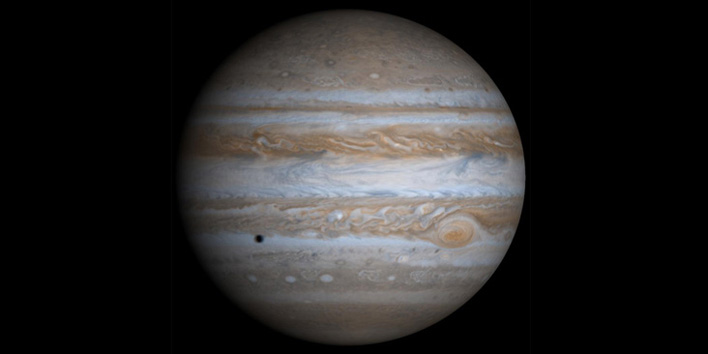
OK fine, this was taken by Cassini on the way to Saturn, because Galileo didn’t get a lot of visual images of Jupiter from this distance.
Galileo gathered information about Jupiter’s astonishing magnetic fields, which are so strong that they spin charged particles around the planet at tremendous speeds — leaving the planet surrounded by an ultraviolet glow that Galileo saw with its ultraviolet sensors.
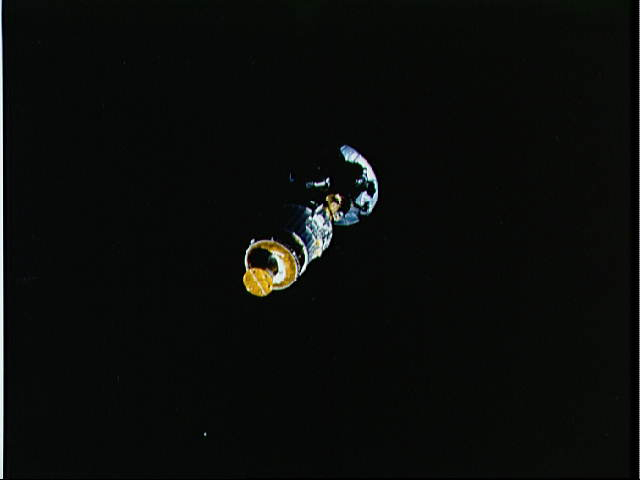
Galileo as seen shortly after release from Atlantis, via NASA
My extremely important and well-founded feelings about Jupiter aside, Galileo also gave us evidence of a liquid ocean beneath the thick, icy crust of its moon Europa (below), and hinted at water on two other moons: Ganymede and Callisto.
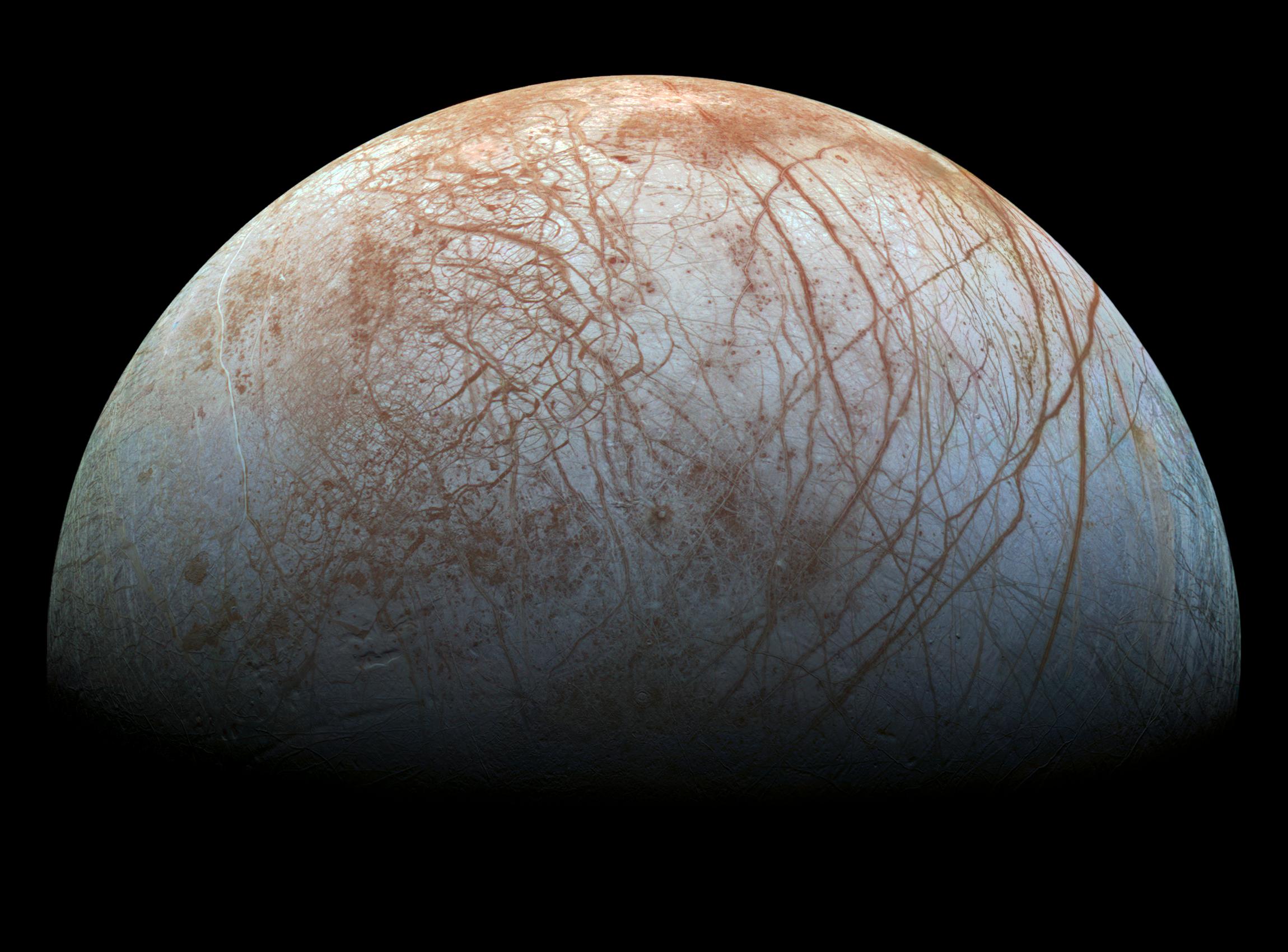
Fearing that Galileo might contaminate one of Jupiter’s possibly life-bearing moons with Earth bacteria if it died and crashed, NASA decided to end the mission by plunging the failing probe into Jupiter’s high-pressure, superheated atmosphere in 2003. And that gave us even more valuable data.
Scientists are still combing through data gathered by Galileo, searching for signs of life on Jupiter’s moons.
7. Veneras 1-16
Let’s give it up for every single one of these 16 Soviet spacecraft, which zoomed to Venus, plunged into its thick, high-pressure atmosphere, and were the first space probes ever to land and remain for any length of time on this mysterious, broiling hot planet (one NASA Pioneer probe lasted for about an hour in 1978; late model Veneras lasted two). The first Venera was launched in 1961, and the last two in 1983.
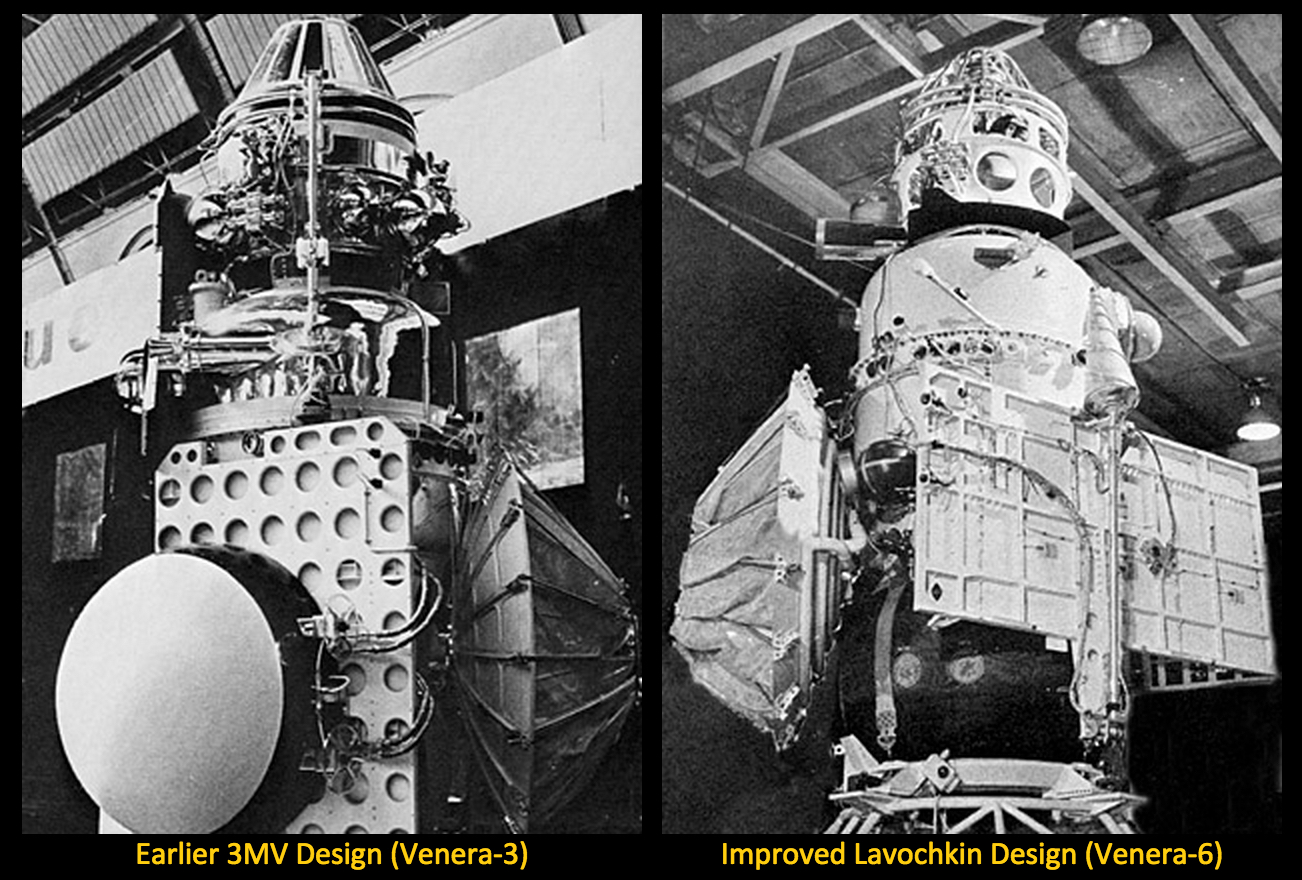

Soviet images from Venera-13 of the Venusian surface, with image processing by Don Mitchell
Don Mitchell has a terrific website about the Venera program, which details what we know about the technology the Soviets used, as well as the tools they brought to the Venusian surface and what they learned there. The best piece of data? It’s likely that Venus has volcanic lightning. We also learned that the clouds are probably a bruised orange colour from the ground.
8. MESSENGER
This NASA probe flew past Venus and onward to Mercury, giving us some of the most detailed images we’ve ever had of the tiny, tidally-locked rocky planet closest to our star, Sol.
Launched in 2004, the probe arrived at Mercury in 2011, where it remained in orbit until earlier this year and took images and gathered sensor data suggesting that the planet harbored enormous amounts of water ice in its polar craters, which exist in permanent shadow. This ancient ice was covered in a thick layer of dust and organic compounds, which gave astronomers hints about how the inner solar system got its water. Below, you can see a video created from images MESSENGER took while flying low over the planet.
Video via: NASA/Johns Hopkins University Applied Physics Laboratory
Mercury’s water supports a hypothesis that suggests the inner planets were bombarded with icy comets and rocks early in the solar system’s formation. These bolides also contained the organic compounds which are the building blocks of life as we know it on Earth.
Earlier this year, after transmitting data from Mercury for several years, MESSENGER finally smashed into the planet.
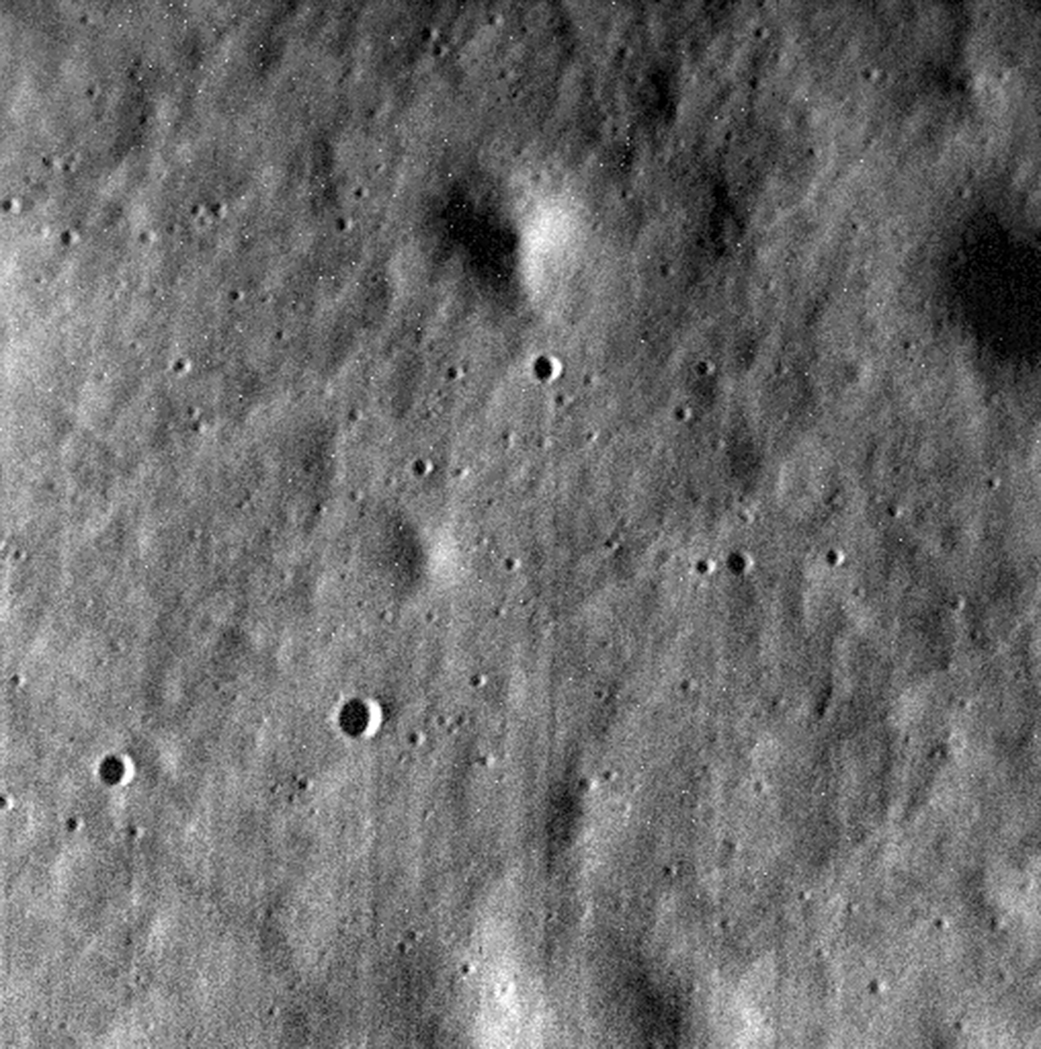
This is one of the last five images that MESSENGER transmitted, on April 30, 2015, right before it smashed into Mercury’s surface and went silent forever. Image via NASA.
MESSENGER was the first interplanetary spacecraft to orbit Mercury, and scientists will be analysing its data for years to come.
9. Mars Reconnaissance Orbiter (MRO)
OK, a lot of these spacecraft are Martian. That’s because humans are planning to live on Mars one day, so of course we need the services of an incredible vessel like NASA’s MRO to map the whole thing for us, take glorious pictures, figure out its weather patterns, learn where the planet hides its water, and seek out locations where we might one day land future missions.

Above is Jezero crater, a possible landing site for a 2020 mission to Mars. It’s full of clay deposits and appears to have once been a lake. Image via NASA.
So far, the MRO has gathered more data than we could have ever dreamed, and has helped scientists understand the planet’s seasonal dust storms — as well as possible water flows.

Above, according to NASA, this gif shows “how the appearance of dark markings on Martian slopes changes with the seasons. The marks, called recurrent slope linea, extend down slopes during warmer months and fade away during cooler months.” These images were taken in the same spot, at several points in the year, in a crater on the floor of Valles Marineris. They look like features we would associate with water flows on Earth, but scientists still are not sure what causes them on Mars.
Launched in 2005, the MRO’s mission was supposed to end in 2010, but the sturdy orbiter has continued to function and has even sent us images of Curiosity roaming the planet.
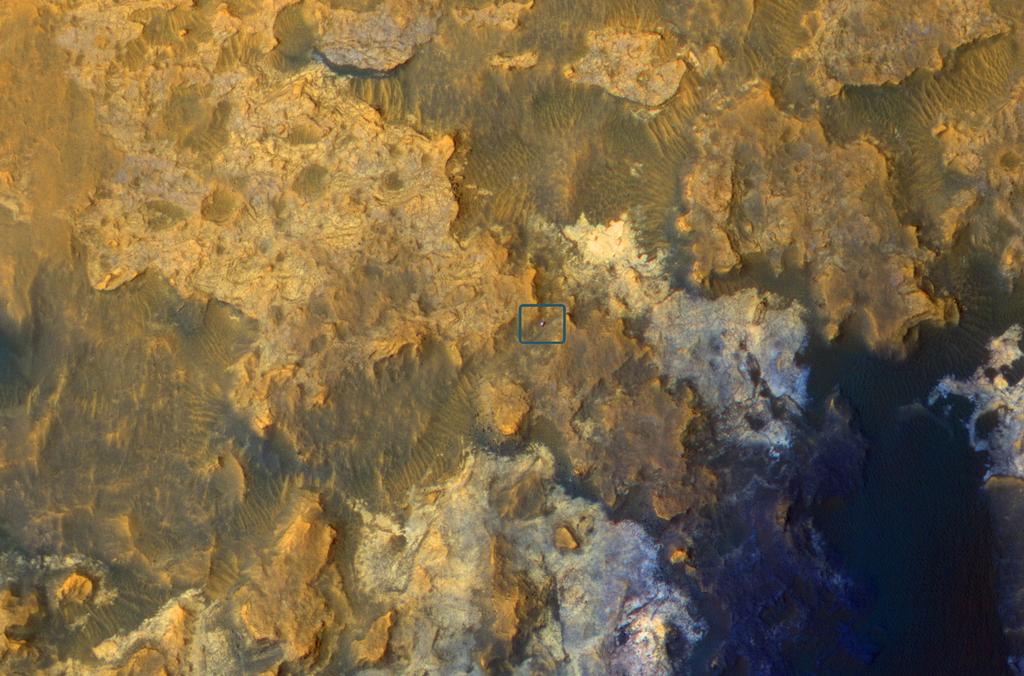
Curiosity toodling along. Image via NASA.
Pretty much all of the gorgeous pictures you’ve seen of the Martian landscape come from the ultra-high resolution HiRISE camera on board.
10. Rosetta-Philae
We learned about how comets brought water to the early solar system from MESSENGER, but ESA’s Rosetta probe was the first mission to deliver a lander, Philae, to a comet.
Launched in 2004, Rosetta’s mission was to rendezvous with Comet 67P/Churyumov — Gerasimenko and find out more about these frozen rocks that come mostly from the remote Oort Cloud, plunging into the solar system to zip around our sun in alarmingly elliptical orbits. It’s lander, Philae, would actually sit atop the comet, analysing its composition while the comet began to melt and spew superheated gas as it approached the sun. It took 10 years and many gravity assists from Mars and Earth to reach the comet and get into orbit.
When we reached the comet in late 2014, mission control immediately got incredible close-up images of its icy fissures. Flying through its corona, the plume of heated gasses created by melting that turns into what we see as a comet tail, Rosetta discovered that water molecules break up slightly differently than they do on Earth — on this comet, they are shattered by electrons, not photons.
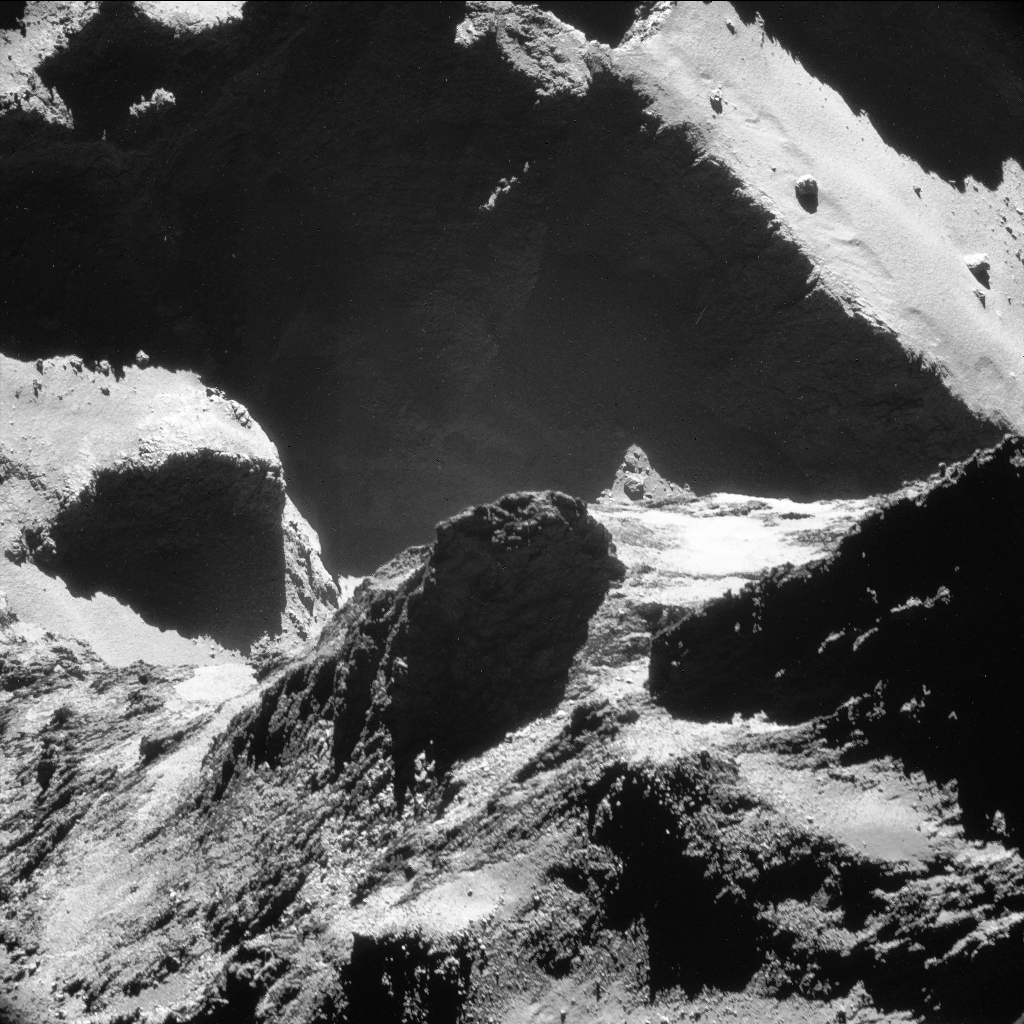
The surface of a comet up close. Image via ESA.
Last week, after several months of hibernation, the Philae lander woke up and began transmitting again. It looks like we’ll be riding this comet a lot closer to the sun than we thought.
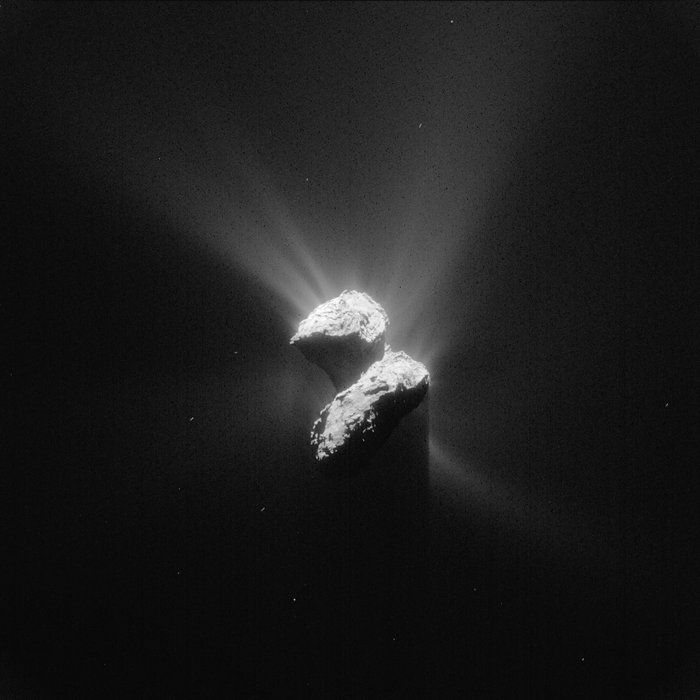
This image of the comet was taken on June 5, 2015. Rosetta is still doing its job, and giving us more data than we ever dreamed. Image via ESA.
The mission is supposed to end in December of this year, but could conceivably continue for as long as Rosetta holds out. Philae, sitting on the comet’s surface, is not likely to survive the whole trip around the sun — but you never know!
11. New Horizons
New Horizons, launched in 2006, is another triumphant first for humanity — it’s the first spacecraft ever to reach the former planet (now planetoid) Pluto. It will be mapping this distant body, gathering data on its moons, and finding out what things are like in the outer reaches of our solar system.
It will fly by Pluto next month, July 2015 (you will be able to follow the action in a livestream from NASA), and the probe is already sending back a wealth of data. It will map Pluto and its planetoid twin Charon, looking for signs of atmosphere, planetary rings, and more.
Obviously being the first to Pluto is a great triumph, but we have yet to see how well New Horizons will perform. Plus, Pluto is just kind of a crappy non-planet so I’m sorry New Horizons fans, but this ship isn’t in the top five.
12. Deep Impact
Deep Impact was another comet mission, but its entire goal was to smash an “impactor” into comet Tempel 1 — just to see what would happen. Launched in January 2005, it arrived at its destination just 7 months later. There were a number of scientific goals here, but one was to see what kinds of ejecta would come out of the comet smackdown, so we could analyse the comet’s composition. The impact was not enough to change the comet’s trajectory in any meaningful way. But it was our first close brush with a comet.
We didn’t wind up releasing much ejecta. But we did get this amazing image, taken a little over a minute after impact. The “impactor,” as it was called, was basically just a giant, self-guiding slug made mostly of copper.
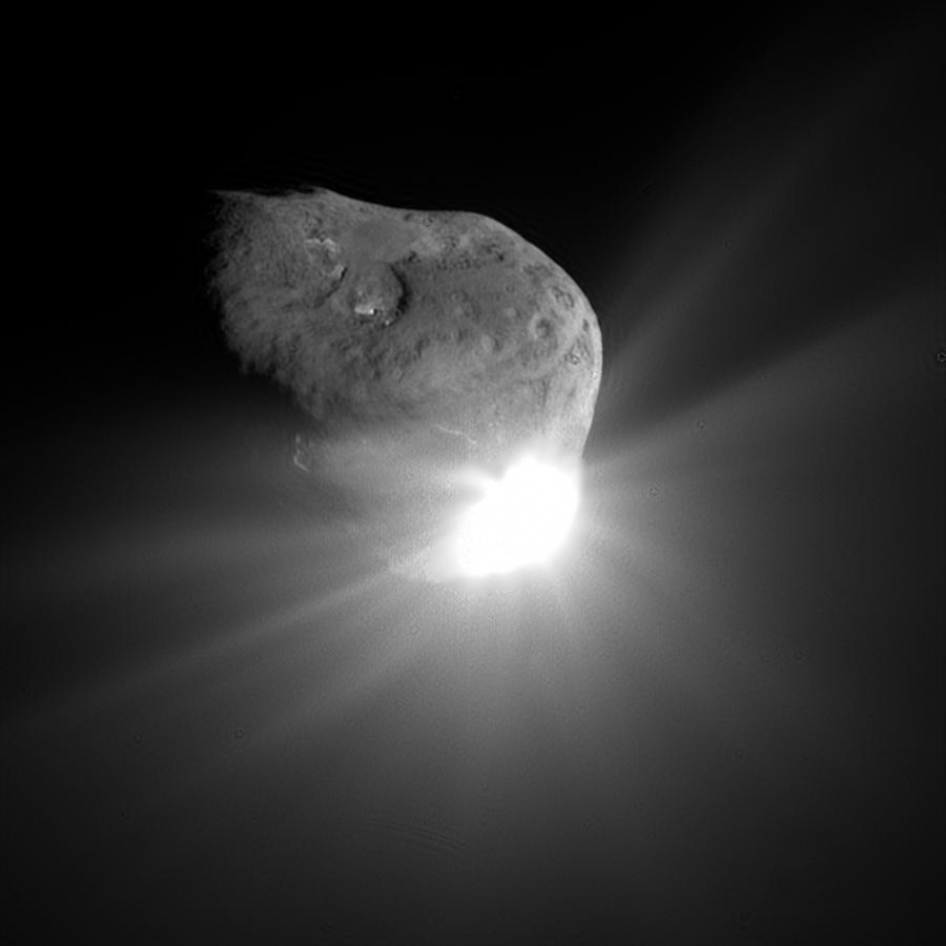
Picture: NASA
Though Deep Impact is hardly as cool as Rosetta and Philae, I’m going to give it points on this list purely because its entire goal was to smash into something. Also, it shares a name with a movie about the Earth being destroyed by a comet, which is sort of creepy.
